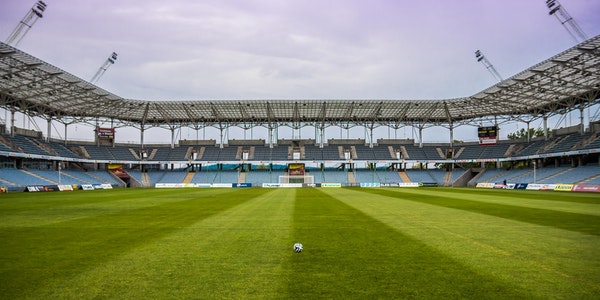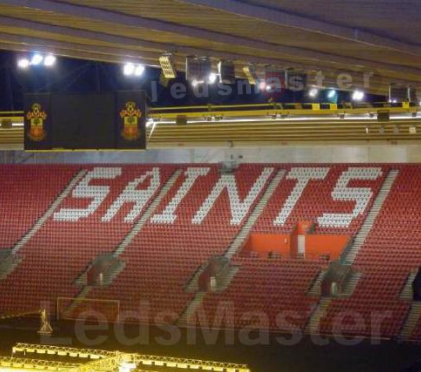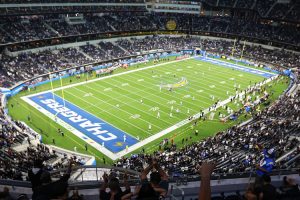- Examples of Incentive Programs
- California’s PG&E Energy Efficiency Rebates
Pacific Gas and Electric Company offers rebates for businesses that install energy-efficient lighting. The rebates can cover a significant portion of the cost of LED upgrades.
- New York State’s NYSERDA Incentives
The New York State Energy Research and Development Authority provides financial incentives for energy efficiency projects, including lighting upgrades in large commercial and industrial buildings.
- Massachusetts’ Mass Save Program
Mass Save offers rebates and incentives for energy-efficient lighting installations, funded by the state’s major electric and gas utilities.
Taking advantage of available incentives for energy-efficient upgrades can greatly reduce the financial burden of transitioning to LED lighting in stadiums and sports venues. By leveraging federal, state, and local programs, utility company rebates, and grants from environmental organizations, facilities can achieve substantial cost savings and enhance the return on investment for their energy-efficient improvements. These incentives not only make the initial investment more manageable but also support broader sustainability and operational efficiency goals.
2. Case examples of financial benefits
Here are a few case studies that illustrate the financial benefits realized by various sports venues after upgrading to LED lighting systems:
- AT&T Stadium (Home of the Dallas Cowboys)
Project Overview:
Location: Arlington, Texas
Previous Lighting System: Metal halide lamps
Upgrade: Installation of LED lighting throughout the stadium
Financial Benefits:
Initial Investment: Approximately $2 million
Energy Savings: 60% reduction in energy consumption
Annual Savings: Estimated $500,000 in electricity costs
Maintenance Savings: Reduced frequency of bulb replacements and lower labor costs
Annual Maintenance Savings: Estimated $200,000
Total Annual Savings: $700,000
Payback Period: Approximately 3 years
Additional Benefits:
Improved lighting quality and consistency
Enhanced viewing experience for fans
- Mercedes-Benz Stadium (Home of the Atlanta Falcons)
Project Overview:
Location: Atlanta, Georgia
Previous Lighting System: Metal halide and fluorescent lamps
Upgrade: Comprehensive LED lighting installation
Financial Benefits:
Initial Investment: Approximately $1.5 million
Energy Savings: 50% reduction in energy consumption
Annual Savings: Estimated $400,000 in electricity costs
Maintenance Savings: Longer lifespan of LED fixtures reducing maintenance frequency
Annual Maintenance Savings: Estimated $150,000
Total Annual Savings: $550,000
Payback Period: Approximately 2.7 years
Additional Benefits:
Enhanced player performance due to better visibility
Greater flexibility in lighting controls for events
Support for the stadium’s sustainability goals
- Staples Center (Home of the Los Angeles Lakers and Clippers)
Project Overview:
Location: Los Angeles, California
Previous Lighting System: High-pressure sodium lamps
Upgrade: Installation of energy-efficient LED lighting
Financial Benefits:
Initial Investment: Approximately $1 million
Energy Savings: 55% reduction in energy consumption
Annual Savings: Estimated $300,000 in electricity costs
Maintenance Savings: Fewer bulb replacements and reduced labor costs
Annual Maintenance Savings: Estimated $100,000
Total Annual Savings: $400,000
Payback Period: Approximately 2.5 years
Additional Benefits:
Enhanced spectator experience with improved lighting quality
Reduced operational disruptions due to fewer maintenance requirements
Contribution to the arena’s green building certification efforts
- Gillette Stadium (Home of the New England Patriots)
Project Overview:
Location: Foxborough, Massachusetts
Previous Lighting System: Metal halide lamps
Upgrade: Comprehensive LED lighting retrofit
Financial Benefits:
Initial Investment: Approximately $1.8 million
Energy Savings: 65% reduction in energy consumption
Annual Savings: Estimated $600,000 in electricity costs
Maintenance Savings: Significant reduction in maintenance frequency and costs
Annual Maintenance Savings: Estimated $250,000
Total Annual Savings: $850,000
Payback Period: Approximately 2.1 years
Additional Benefits:
Enhanced player performance with improved visibility and reduced glare
Superior fan experience with vibrant and consistent lighting
Strengthened sustainability initiatives
These case examples demonstrate the substantial financial benefits sports venues can achieve by upgrading to LED lighting systems. The significant reductions in energy consumption and maintenance costs contribute to rapid payback periods, making LED upgrades a financially sound investment. Beyond cost savings, LED lighting also enhances the overall experience for players and fans, supports sustainability goals, and improves operational efficiency.
VI. Challenges and Solutions
A. Upfront Costs
1. Financing options
Upgrading to LED stadium lighting involves significant upfront costs, but various financing options can help manage these expenses and make the transition more financially feasible. Here are several financing methods available for sports venues:
- Utility Rebates and Incentive Programs
- Utility Rebates:
Many utility companies offer rebates for installing energy-efficient lighting systems.
Rebates can significantly reduce the initial investment required for LED upgrades.
Contact your local utility provider to learn about specific rebate programs available in your area.
- Performance-Based Incentives:
Utility companies may offer incentives based on the actual energy savings achieved through the upgrade.
These incentives can be used to offset the costs of the LED installation.
- Energy Savings Performance Contracts (ESPCs)
- Definition:
An ESPC is a partnership between the stadium and an Energy Service Company (ESCO).
The ESCO designs, implements, and finances the energy-saving improvements.
The stadium repays the ESCO over time through the cost savings achieved from reduced energy consumption.
- Benefits:
No upfront costs: The ESCO covers the initial investment.
Guaranteed savings: The ESCO guarantees energy savings, which are used to pay for the project.
Comprehensive services: ESCOs often provide ongoing maintenance and monitoring services.
- Lease-Purchase Agreements
- Operating Leases:
Allows the stadium to lease the LED lighting system over a set period.
At the end of the lease term, the stadium has the option to purchase the system at a residual value.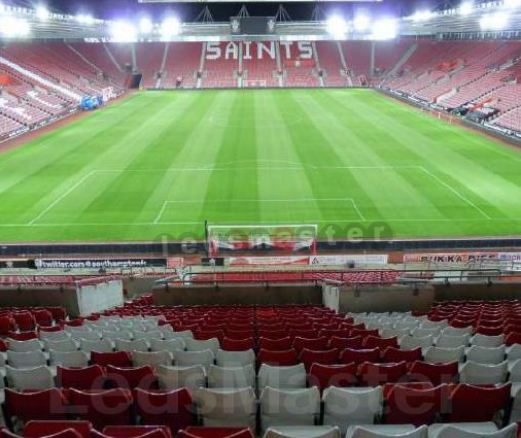
- Capital Leases:
Similar to a loan, where the stadium makes regular payments over time.
At the end of the lease term, ownership of the LED system is transferred to the stadium.
- Benefits:
Spread out payments: Reduces the need for a large upfront investment.
Immediate savings: The stadium can start benefiting from energy savings while making lease payments.
- Green Bonds and Loans
- Green Bonds:
Green bonds are a type of financing specifically earmarked for environmentally friendly projects.
Stadiums can issue green bonds to raise funds for energy-efficient lighting upgrades.
Investors are attracted to the environmental benefits and potential financial returns.
- Green Loans:
Financial institutions offer green loans for projects that promote energy efficiency and sustainability.
These loans often come with favorable interest rates and terms.
- Benefits:
Dedicated financing: Funds are specifically allocated for green projects.
Favorable terms: Potential for lower interest rates compared to traditional loans.
- Internal Funding and Budget Allocation
- Internal Capital:
Stadiums with sufficient cash reserves can use internal funds to finance LED lighting upgrades.
Allocating part of the annual budget towards energy efficiency projects can be a strategic investment.
- Incremental Budgeting:
Gradually allocating funds over several budget cycles to cover the cost of the upgrade.
Helps manage expenses without significantly impacting the stadium’s financial health.
- Government Grants and Programs
- Federal and State Grants:
Various government agencies offer grants for energy-efficient upgrades.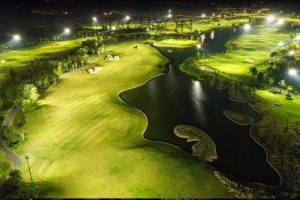
Examples include programs from the U.S. Department of Energy (DOE) and state energy offices.
- Low-Interest Loans:
Government programs may offer low-interest loans to finance energy efficiency projects.
These loans often have favorable terms and conditions to promote sustainability.
- Benefits:
Reduced financial burden: Grants do not need to be repaid.
Favorable financing: Low-interest loans reduce the cost of borrowing.
- Public-Private Partnerships (PPPs)
- Definition:
A collaboration between public entities (e.g., city or state governments) and private companies to finance, build, and operate projects.
Can be used for large-scale energy-efficient upgrades in public sports venues.
- Benefits:
Shared investment: Reduces the financial burden on a single entity.
Expertise and resources: Leverages the expertise and resources of private companies.
Stadiums looking to upgrade to LED lighting have multiple financing options to consider. These options can help manage the initial investment and leverage the long-term savings from reduced energy and maintenance costs. By exploring utility rebates, performance contracts, lease agreements, green bonds, government grants, and public-private partnerships, sports venues can find a financing solution that aligns with their financial strategies and sustainability goals.
2. Case for long-term investment
Upgrading to LED lighting in stadiums represents a strategic long-term investment that offers substantial financial, operational, and environmental benefits. Here’s a comprehensive analysis of why LED lighting is a smart long-term investment for sports venues:
- Financial Benefits
- Energy Cost Savings:
Efficiency: LED lights consume up to 70% less energy than traditional lighting systems like metal halide or high-pressure sodium lamps.
Annual Savings: Significant reduction in electricity bills. For example, a stadium that spends $1 million annually on lighting could save $700,000 each year with LED lighting.
- Maintenance Cost Reduction:
Longer Lifespan: LED fixtures typically last 50,000 to 100,000 hours, compared to 10,000 to 20,000 hours for traditional lamps.
Reduced Labor Costs: Fewer replacements mean lower labor and maintenance costs. For instance, if a stadium saves $200,000 annually in maintenance costs, the long-term savings are substantial.
- Total Cost of Ownership:
Payback Period: Despite higher initial costs, the payback period for LED lighting is often between 2 to 5 years, depending on the size of the venue and current lighting costs.
Return on Investment (ROI): With significant energy and maintenance savings, the ROI can be as high as 200-300%, making LED lighting a financially sound investment.
- Operational Benefits
- Enhanced Performance and Experience:
Better Visibility: LED lights provide uniform, high-quality lighting that enhances visibility for players and spectators, improving the overall experience.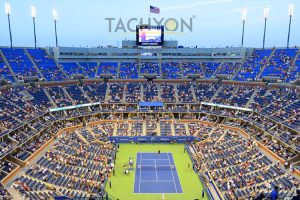
Customizable Lighting: LEDs offer flexibility in brightness and color temperature, allowing for tailored lighting conditions for different events.
- Reliability and Durability:
Solid-State Technology: LED lights are more durable and resistant to damage from vibrations and impacts, reducing the likelihood of outages during events.
Consistent Performance: LEDs maintain consistent light output over their lifespan, ensuring reliable performance for every event.
- Reduced Downtime:
Fewer Replacements: Longer lifespans and fewer maintenance requirements mean less downtime for lighting replacements, ensuring uninterrupted operations.
- Environmental and Sustainability Benefits
- Lower Carbon Footprint:
Energy Efficiency: Reduced energy consumption directly translates to lower greenhouse gas emissions, supporting sustainability goals.
Sustainable Practices: Using LED lighting aligns with environmental sustainability initiatives, enhancing the venue’s reputation as a green facility.
- Waste Reduction:
Longer Lifespan: Fewer replacements mean less waste from discarded bulbs, reducing the environmental impact.
Recyclability: Many LED components are recyclable, further minimizing environmental harm.
- Strategic Advantages
- Enhanced Venue Appeal:
Modern Technology: Upgrading to LED lighting positions the stadium as a modern, forward-thinking facility, attracting more events and increasing revenue opportunities.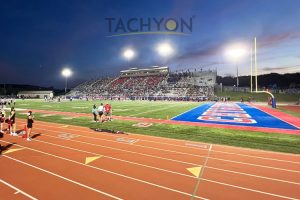
Fan Experience: Improved lighting quality enhances the fan experience, potentially increasing ticket sales and fan loyalty.
- Compliance and Incentives:
Regulatory Compliance: Many regions are implementing stricter energy efficiency standards. LED upgrades ensure compliance with these regulations.
Financial Incentives: Taking advantage of available rebates, grants, and incentives for energy-efficient upgrades can significantly offset initial investment costs.
- Future-Proofing:
Technological Advancements: Investing in LED technology future-proofs the stadium, making it easier to integrate with emerging technologies such as IoT and smart lighting controls.
Scalability: LED systems can be easily expanded or upgraded, accommodating future growth and technological advancements.
Investing in LED stadium lighting is a strategic decision that offers significant long-term financial, operational, and environmental benefits. The substantial energy and maintenance cost savings, coupled with enhanced performance and sustainability, make LED lighting a smart choice for sports venues. By upgrading to LED lighting, stadiums can achieve a high ROI, improve the overall experience for players and fans, and position themselves as leaders in sustainability and innovation.
B. Technological Adoption
1. Training and education for facility managers
Effective training and education for facility managers are crucial to maximize the benefits of LED stadium lighting. This includes understanding the technology, managing installations, optimizing operations, and maintaining the system. Here’s a comprehensive outline for training and education programs tailored for facility managers:
- Understanding LED Technology
- Fundamentals of LED Lighting:
LED Basics: Explanation of how LEDs work, including semiconductor physics and the conversion of electricity into light.
Types of LED Fixtures: Overview of various LED lighting fixtures used in stadiums (e.g., floodlights, spotlights, and ambient lights).
- Benefits of LED Lighting:
Energy Efficiency: Detailed discussion on energy consumption comparison between LED and traditional lighting. (To Be Continued)

